Table saw and circular saw both are two master-class tools in woodworking. One of the most frequently asked questions is, which of the two is the best? And if one has to buy one, which one should they opt for?
In this article, we will solve the question by comparing a table saw vs. a circular saw. In short, there is no single best tool. Both of the tools have their pros and cons. But that’s not all. It goes deeper than the single statement answer. Let me break it down.
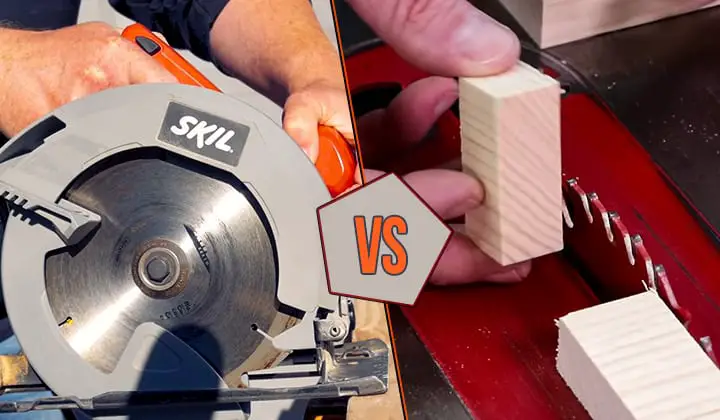
In this post we'll cover:
What Is A Circular Saw?
“Circular saw” is the name of the type of saw, which uses a circular-shaped, toothed, or abrasive blade to cut across various materials. Any power-tool that works on the mechanism falls into this category, but the name mainly emphasizes a handheld, portable, electric saw.
We will also focus on the commonly known circular saw. A circular saw is powered by an electric motor, which gets the power via a cord. Cordless battery-powered models are also available.
The rotation motion is transferred to the blade via a gearbox or directly from the motor in some models. All the parts of the device are housed above a flat base. The only part that sticks underneath the base is a part of the blade.
A circular saw is lightweight and portable. The portability, along with the wide variety of available blade options, makes a circular saw one of the most versatile tools in the world of woodworking.
When used with the proper blade, a circular saw can handily perform crosscuts, miter cuts, bevel cuts, and even rip cuts.
In terms of materials it can handle, a common circular saw can handle different types of wood, soft metals, plastic, ceramic, plywood, hardboard, and in some extreme cases, concrete, or asphalt even.
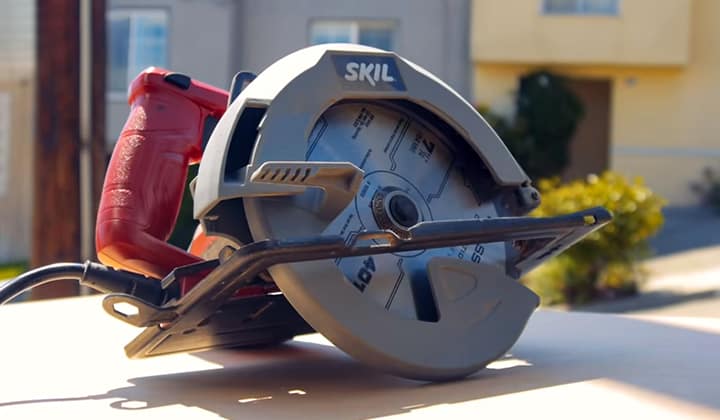
What Is A Table Saw?
A table saw like these top choices is also, by definition, a type of circular saw since it also uses a circular-shaped blade. However, the big difference between the two is that a table saw is more like an upside-down stationary circular saw.
Table saw is also an electric tool. All the parts of a table saw rests underneath the table, with only the blade sticking out above the surface. The workpiece is fed into the blade manually.
A table saw has a few extra components that are not necessarily part of the device but assists the operator tremendously while operating. Since the moving parts of a table saw is stationary, it is slightly safer than a circular saw to begin with.
I mean, the position of the blade, electric parts, etc. are predictable and avoidable. Thus, the device can incorporate a bigger and stronger motor and heavy-duty blade. In short, a table saw is significantly more powerful.
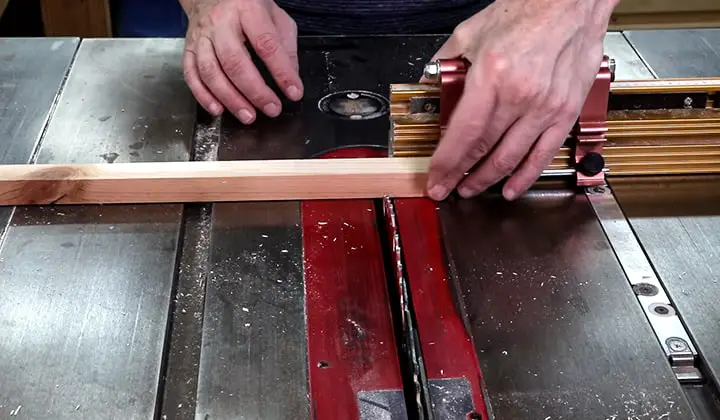
The Common Ground Between A Table Saw And A Circular Saw
As I mentioned before, both of the tools are, by definition, circular saw. Circular saws have some more variations that are pretty similar to circular saws and that is why people get confused. For example – skill saw vs circular saw, track saw and circular saw, jig saw and circular saw, miter saw and circular saw, etc.
Both the table saw and the circular saw work based on the same fundamentals. So, it is just natural that the two will have quite a few things in common.
The first and foremost thing is that they are both mainly woodworking tools, but they both can work on soft metals, plastics, plywood, and so on. However, the degree of precision and efficiency do vary a lot between the two machines.
The accessories used by the two machines are pretty similar if not the same. Things like blades, cords, or other removable parts can be interchanged.
However, do not even attempt to unless you know for sure that the item is perfectly compatible with the other device as well. Such as the saw blade, being a size that either of the machines can handle.
What Sets The Table Saw Apart From A Circular Saw?
Frankly speaking, quite a few things define the differences between the two devices. Things like-
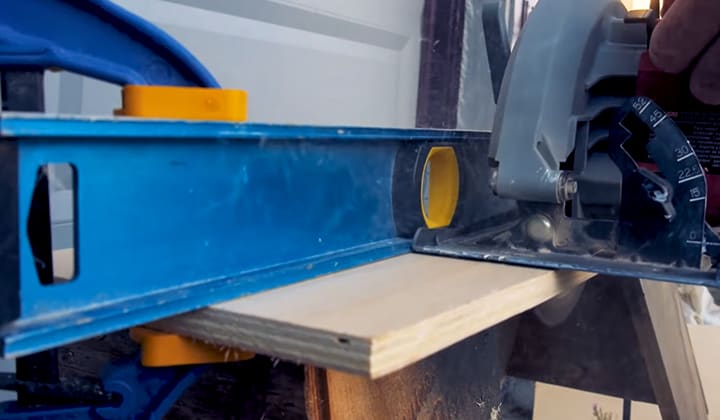
Functionality
As I mentioned previously, the bulk of the table saw sits underneath the table. Thus, The saw itself is stationary, and the workpiece slides on top of it. At the same time, the whole body of a circular saw is what slides on top of the stationary workpiece.
Power
A table saw uses a bigger and more powerful motor, compared to a circular saw of the same price range. Thus, a table saw will almost always provide more power output. This helps a table saw to cut faster. But the quality of the final cut is lower than that of a circular saw.
Also, a powerful motor will limit a table saw from working on materials at the delicate end of the material spectrum. In short, a circular can work on a wider variety of materials.
Portability
A table saw is stationary. And in short, it is not portable. It must be placed in the saw table to be operational. The whole table saw setup has an enormous footprint and decently heavy. So, you are not going to move it just because you need it unless you absolutely have to.
A circular saw, on the other hand, is made for portability. The saw itself is very small, compact, and lightweight. This is meant to be carried wherever it is needed. The ultimate limiting factor is the length of the cord, which is not even a topic worth mentioning.
Efficiency
The efficiency of the devices is very subjective. A table saw allows you to make long straight cuts without sweating, thanks to the guiding fences. The tool can make miter and bevel cuts with little adjustments. The adjustments are slightly time-consuming at first, but once done, repetitive complex cuts are no longer an issue.
The story is slightly different for a circular saw. A long straight cut has never been the best suit for a circular saw. However, it excels at making fast cuts. As soon as the cut marks are ready, you are good to go.
Miter cuts are totally different from regular cuts and setting up the bevel angle is also easy. The best suit for a circular saw is that it will save an enormous amount of time when you need to make a wide variety of cuts, and not much of it is repetitive.
Which Saw To Get?
Which saw will serve you the best is a question you will need to answer yourself. However, I can offer a couple of scenarios to help to make your decision.
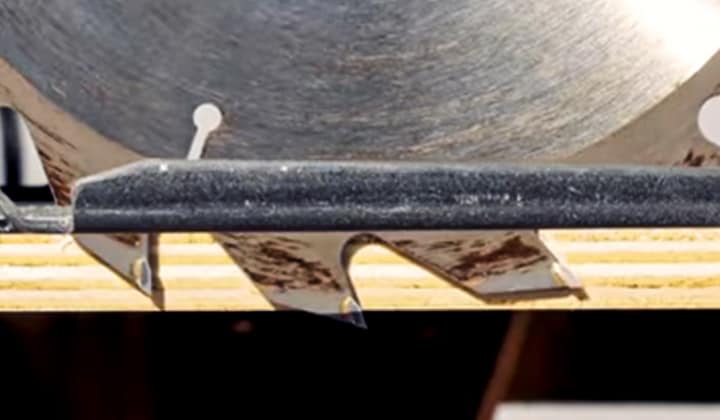
- Are you going to start it as a profession? Then you are better off getting both of the two. Because the two tools are not competitors but complementors. And if you absolutely need to buy one, get a table saw.
- Are you a hobbyist? If so, then a circular saw will more likely give you the most bang for the buck.
- Are you a DIYer? Hmm, it depends on the nature of the work you will be handling. If you foresee yourself doing a bunch of repetitive cuts, then you know the deal; I’ll suggest getting a table saw. Otherwise, a circular saw.
- Are you a newcomer? It’s a no brainer. Buy a circular saw to begin with. It is much easier to learn as a beginner.
Final Words
The concept of the discussion is to make a clear idea about a table saw as well as a circular saw and point out their strengths and weaknesses. The gist of the discussion is that the devices in question are not meant to replace each other, rather work in cooperation with the other.
A table saw has a few specific weaknesses, which a circular saw satisfies pretty well. It is true for the other way around as well. Again, there is no single best tool that does it all, but if you absolutely have to buy only one, The overall suggestion is to go for a circular saw.
I'm Joost Nusselder, the founder of Tools Doctor, content marketer, and dad. I love trying out new equipment, and together with my team I've been creating in-depth blog articles since 2016 to help loyal readers with tools & crafting tips.
